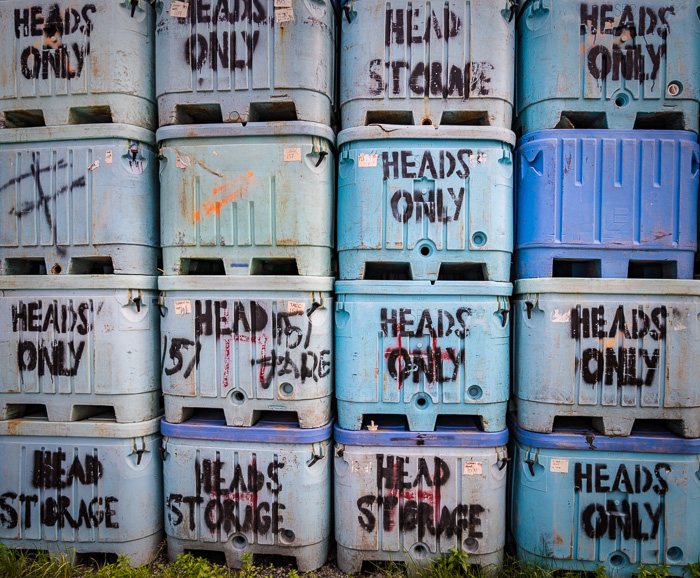Two years ago, I took a boat trip from Montreal down the St. Lawrence and through the Canadian Maritime Provinces. I took a Sony RX1 and a Leica M240. The Sony didn’t survive the first leg of the journey, and I used the Leica exclusively. This occurrence was the source of some merriment on one of the Leica forums.
On this trip, I only had one major equipment failure. When I was using the Leica 16-18-21mm f/4 Tri-Elmar (aka the WATE) on the second day on the boat, I noticed that the aperture click stops were weaker than usual. Then I found a little for-and-aft play in the aperture ring. The diaphragm seemed to work alright, so I just kept shooting.
On a walk along a bear trail on the third day, the lens hood fell off. The WATE lens hood is not supposed to be removable, so this was a source of some concern. The click stops were entirely MIA now, but I kept using the lens. Then two more pieces (that I know of) fell off. I stuffed the parts in my pocket and the camera in my fanny pack. The lens will have to go to the Leica lens doctor in Los Angeles.
I’ve never had a lens just fall apart on me. I’ve had diaphragms get oily or helicoids get sticky, but I’ve never previously experienced a lens converting itself into a pile of parts. This is especially puzzling since the lens has suffered no ill treatment.
Leica is a revered name in photography. They tout their craftsmanship and quality. Their products are priced at astronomical levels. So I am surprised that my first experience with what I’m now calling SLD (spontaneous lens disassembly) should occur with a Leica lens.





From what I read, the hood does indeed screw off, revealing red threading that warns you about the newly protruding front element.
No clue about the click stops, though.
The piece that came off first is the hood and the ring with the lens type and serial number on it. The ring is loose inside the hood, but I can’t get the two pieces apart. There is no red threading, but there is a red anodized ring attached to the back of the hood.
In the UK “aggressive pricing” is used to describe a policy of pricing to undercut the competition to a point they will struggle to match and still make a profit. Note undercut, maybe our common language is separating us.
Less traumatic, until I found out what a replacement cost was, a 28mm f2 Summicron Asph lens hood fell apart on me, curiously on a cruise, during a stop on Madeira.
It can mean both things on this side of the pond, Chris, depending on the context. I’ll make a change to make the meaning clearer.
Thanks,
Jim
Nice series, Jim, reminds me of my four years in BC.
QUOTE: So I am surprised that my first experience with what I’m now calling SLD (spontaneous lens disassembly) should occur with a Leica lens. UNQUOTE
That must be due to lack of experience with Leica lenses.
My pre-aspheric 35 mm Summicron literally fell apart twice. No problem for my dealer; he put it all together again in less than 10 minutes, saying he had been faced with that problem several times with that type of lens. So I bought the ASPH version. I did not experience any Spontaneous LEICA Disassembly with that lens.
I experienced SLD with a Leica 50 Lux ASPH. I had the lens mounted on an M9 and heard a metallic tinkling sound at my feet while out shooting test images because the lens had just come back from recalibration by Leica. Looking down and there was the lens hood assembly (it’s built into the lens and not supposed to come off!) as well as the lens name ring and a couple other parts. None of the optics detached.
I tried to put the one sole screw back in place to secure the hood assembly on the lens, but something appeared to be stripped. Turns out the hood assembly was held in place by that single screw and a few dabs of some sort of glue. The glue looked to have dried out and my ‘manhandling’ of the lens by mounting and dismounting it from the camera while holding it by the lens hood probably worked the screw loose….
I love that lens, optically, but can’t believe someone intentionally designed the hood assembly to be held in place by a single, tiny screw and a bit of glue.
FWIW, I’ve read stories of the 28 Cron also eventually working itself loose and there’s a video tutorial somewhere on YouTube with the steps outlining how to fix it yourself. Its hood is also known to come apart, and/or crack around the viewfinder cutout, which mine has.